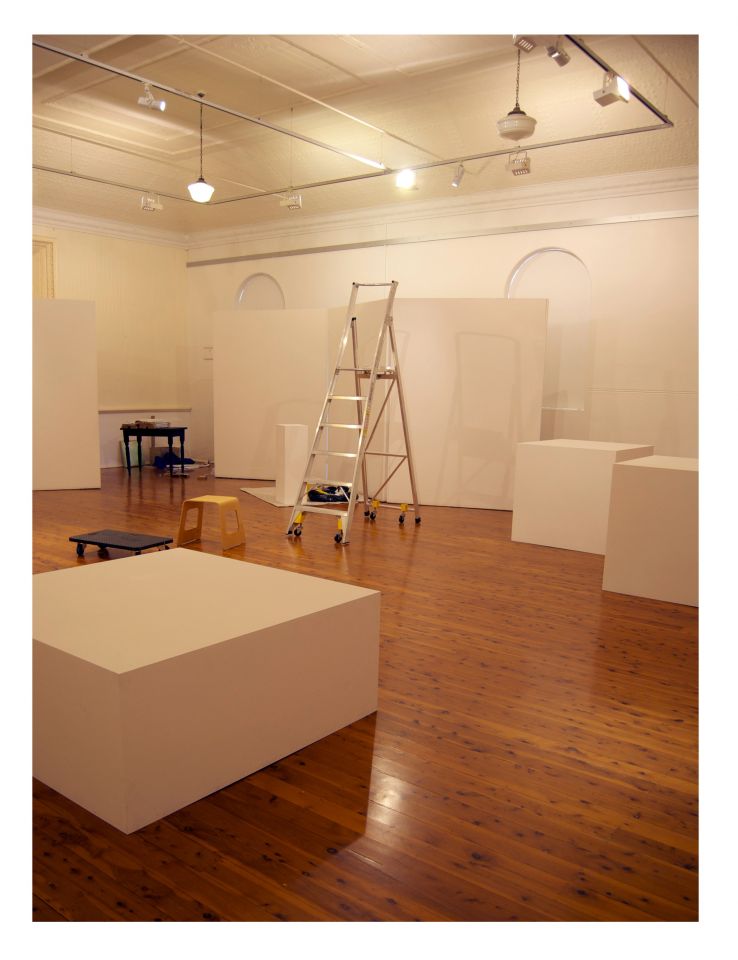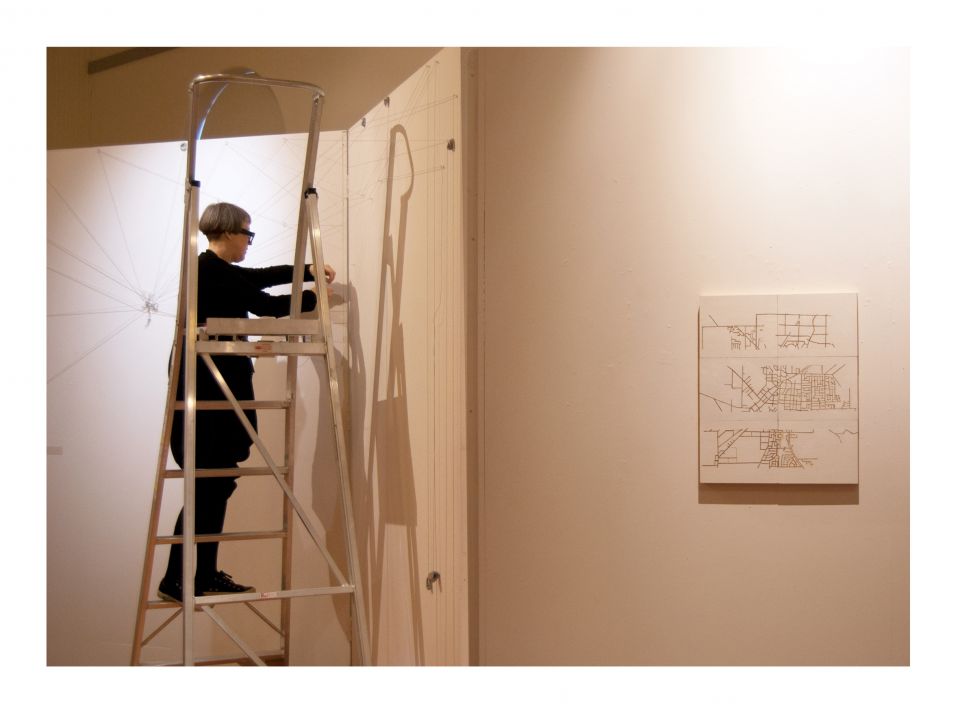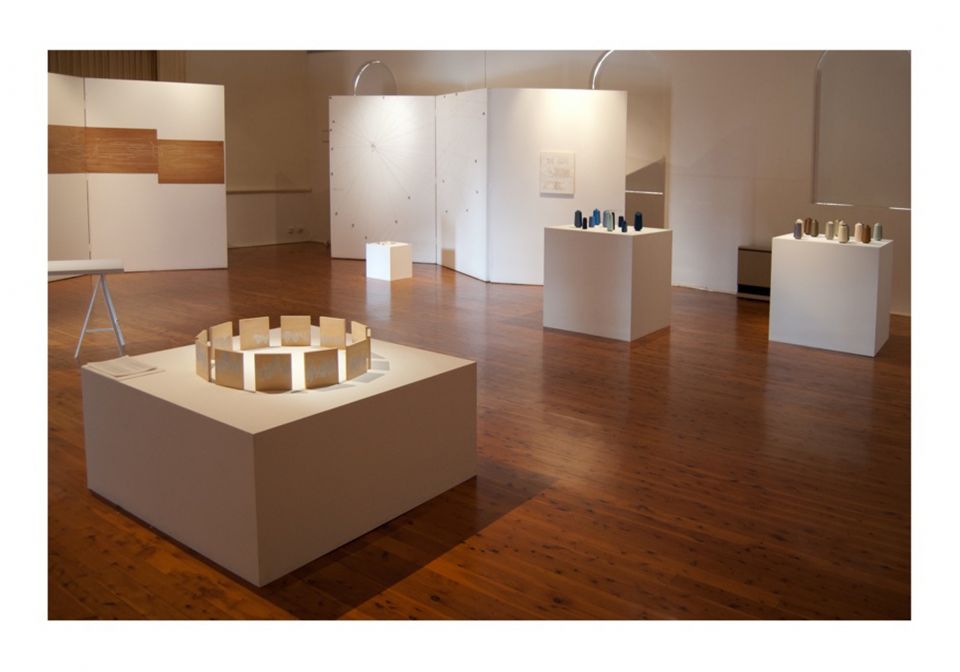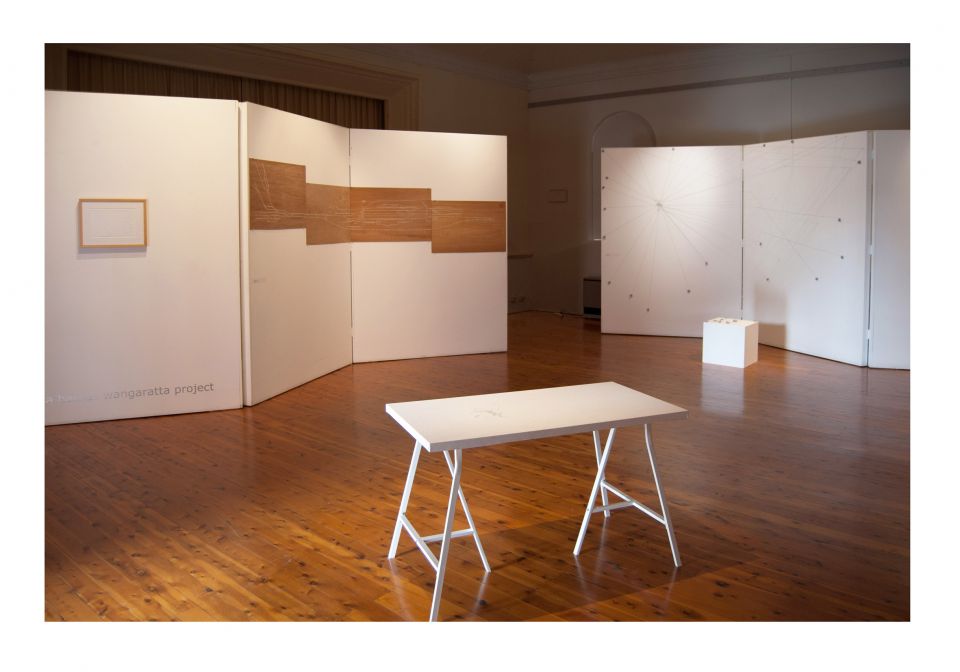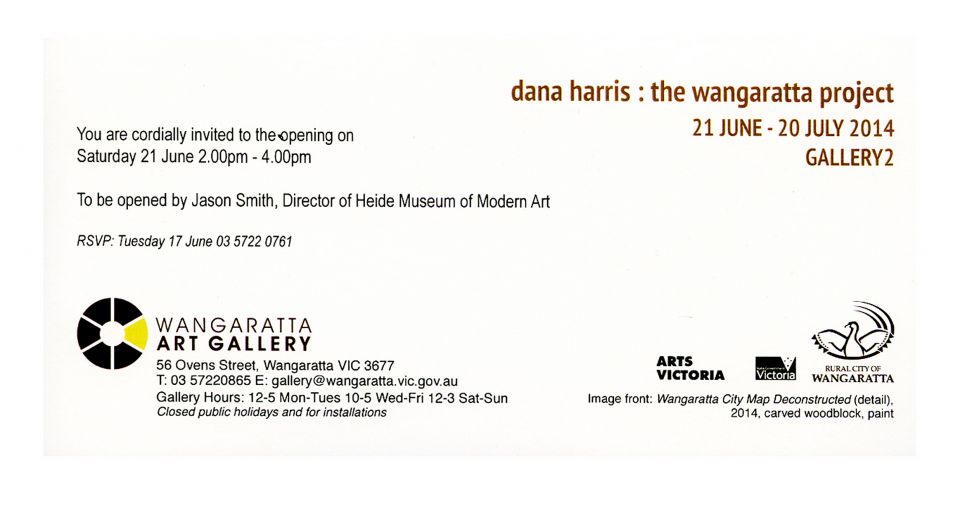projects
wangaratta project
Wangaratta Art Gallery
21.06 - 20.07.2014
This exhibition of new work was commissioned by Di Mangan, the Director of Wangaratta Art Gallery and is based on the landscape and environment of Wangaratta city and the surrounding region. Opened by Jason Smith, the Director of Heide Museum of Modern Art, the exhibition consisted of 7 works, which included drawings, sculptures, textile works and a diverse range of media, including paper, wood, thread and canvas. Two works were purchased by the Gallery for their Collection: 12 apostles and watertable.
drawing collaboration
I sent emails to people asking them to respond to the word ‘mapping’. Using the concept of a mindmap, I responded to their ideas, and handwrote my responses and collaged the words in the drawing. This work was the catalogue as it signifies some of my working methods: collating information, responding to concepts and creating images in an elegant, refined way.

signal
In this work, I used chalk to redraw a Signalling Diagram from VLine dated 1990. It shows gauged lines and sidings, the goods shed and platforms, the signal box and tracks, all without notation. On top of this drawing, I have traced the journey from Melbourne to Sydney, with a nail standing proud marking each station.
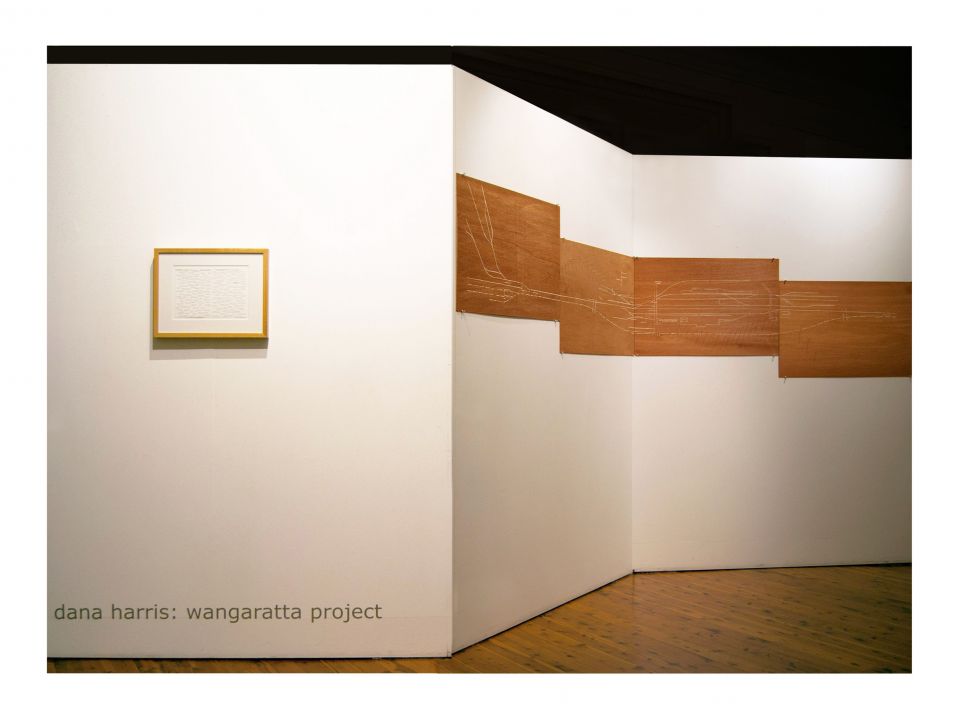
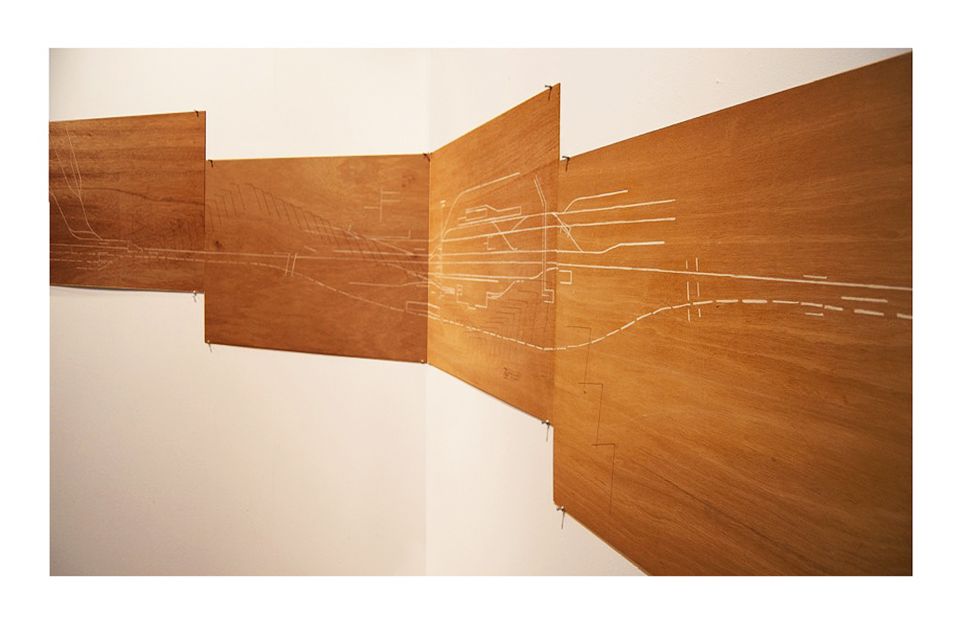
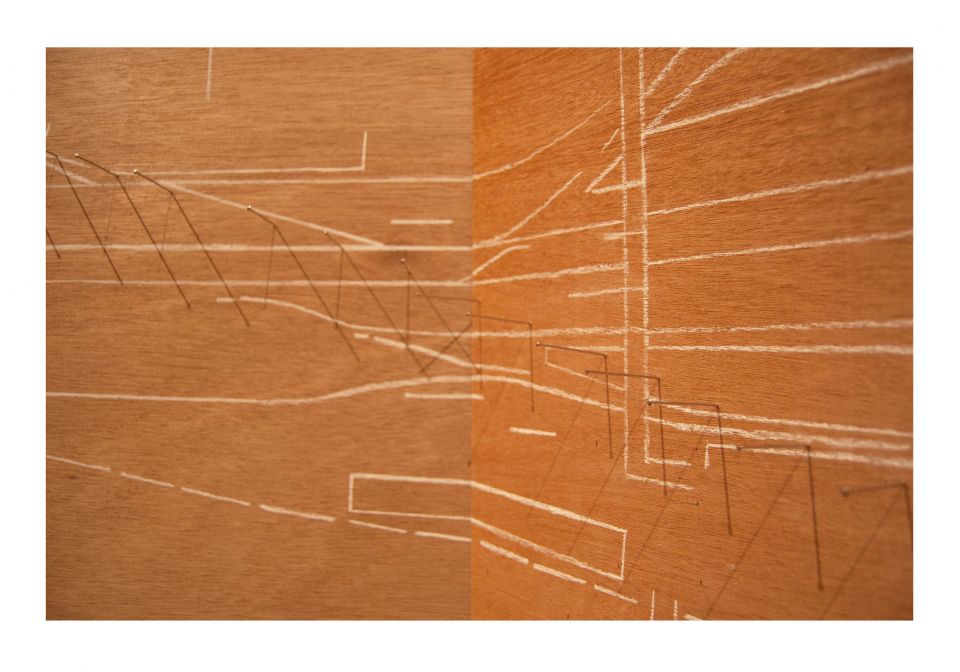
stringwork
This installation is based on the rural map of Wangaratta. The shorter nails trace the main roads that travel out from the city, the longer nails signify Wangaratta, Springhurst, Peechelba, Eldorado, Tarrawingee, Everton, Oxley, Milawa, Wholouly, Glenrowan, Moyhu, Whitfield and Cheshunt. The cotton thread binds all these together and then in long spans, reaches out to other places in the landscape.

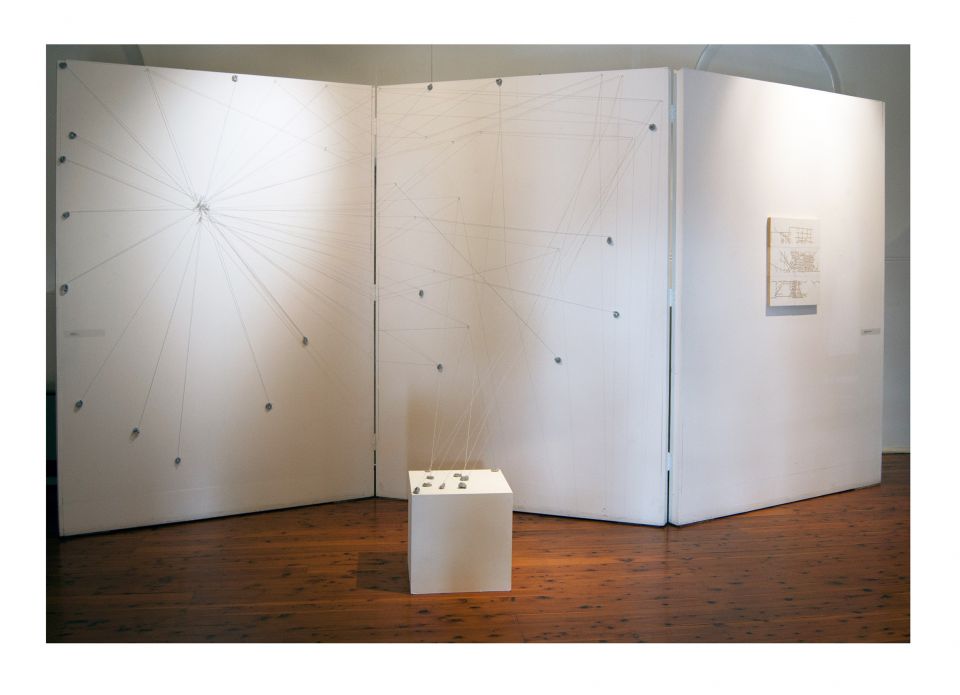
wangaratta city map deconstructed
This work refers to a 1975 street map of Wangaratta produced and printed by the Broadbents company. I focused solely on the original information, creating a woodblock by handcarving the streets into 6 painted wooden panels bought in Tokyo, referring to the ancient history of the craft of Japanese woodblock. The deconstructed panels have spaces in between the carved lines, allowing for the changes that the city has accommodated in the past almost 40 years.
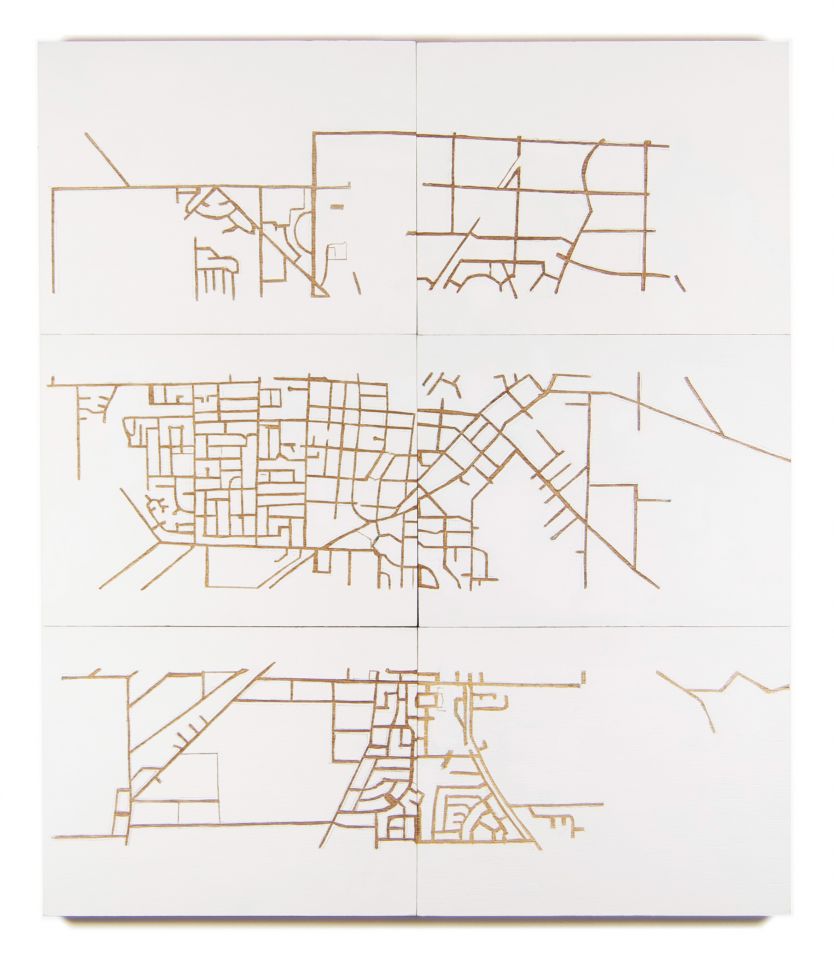
flora
From a larger series known as ‘spoolworks’, these works examine my response to the colours seen in the Ovens River area, using bound embroidery cotton. Trees such as the River Red Gum, the Silver Wattle, the White Cypress Pine, the Grey and Yellow Box throw off the most amazing colours and the skies range from a variety of rich blues to lilacs.
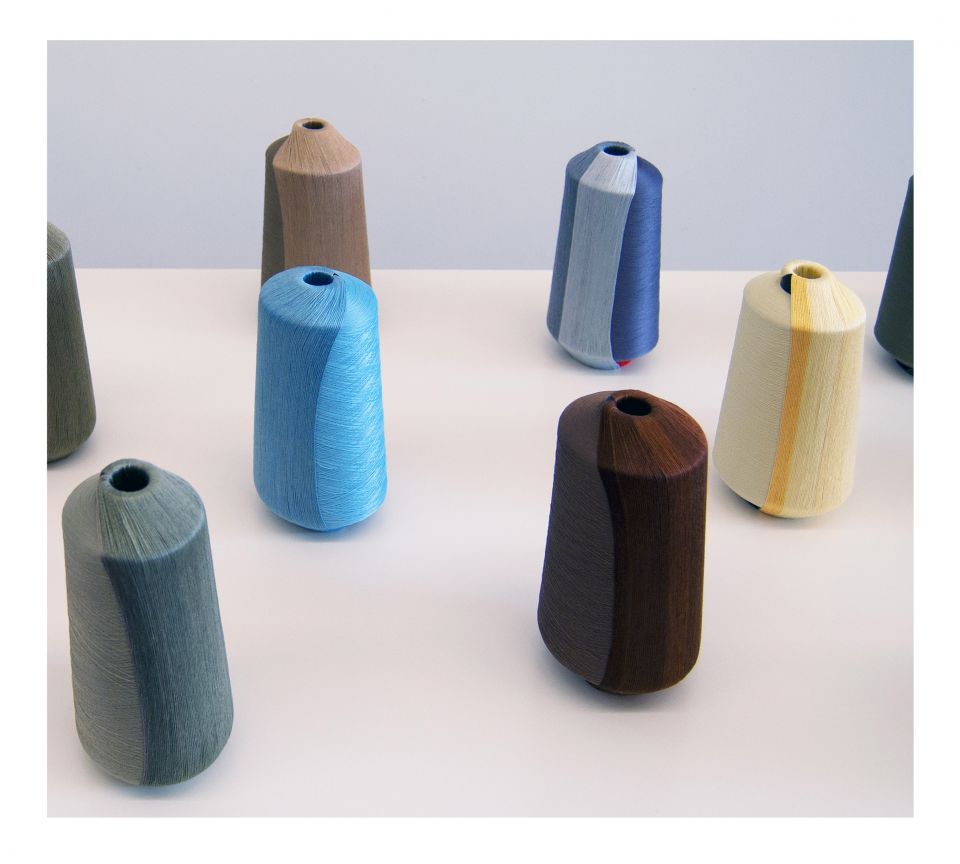
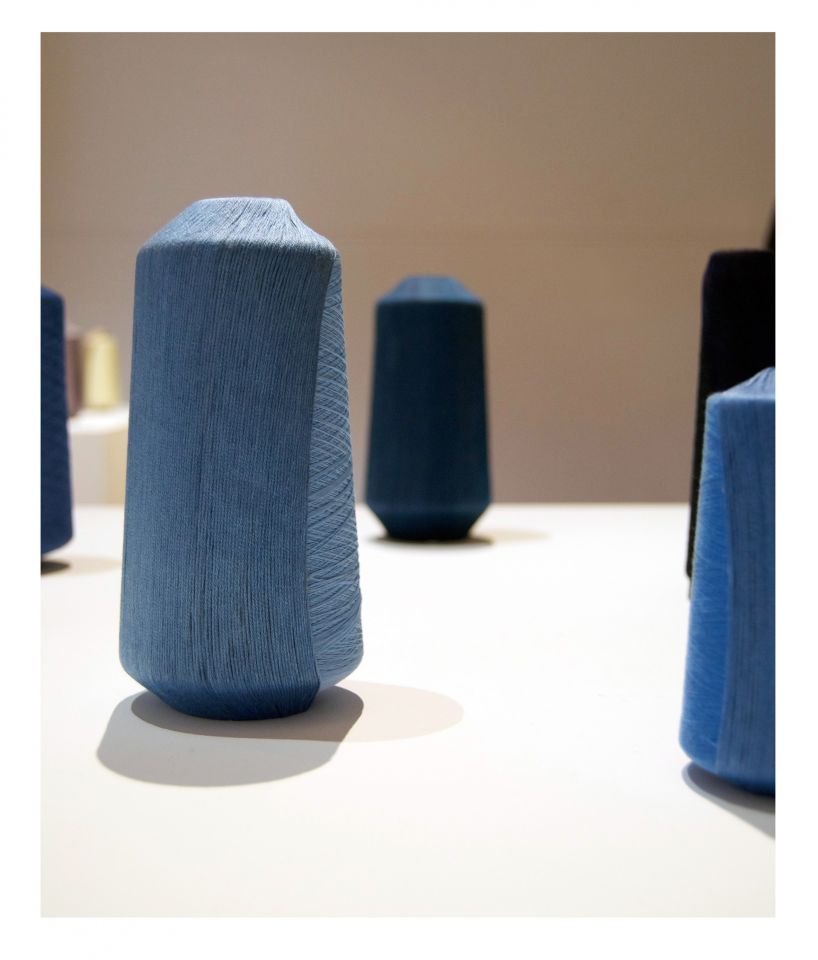

12 apostles
I researched daily temperatures taken from the Wangaratta aerodrome station -#82138- when it first operated in mid May 1987. This year is significant as the Wangaratta Art Gallery also opened in 1987. Noting the daily minimum and maximum temperatures, I drew a graph to show this information for each month on a plywood block forward for 12 months. On the reverse of each plywood block, I collected and drew a graph of the daily minimum and maximum from May 2014 backwards for 12 months. Using a steel nibbed pen with silver ink directly on the plywood block, the drawing relates the temperatures to the shape of the landscape. The title refers to the common usage, from the original classical Greek ‘apostolos’, meaning one who is sent away to convey messages- this one being the difference seen most acutely between the 2 faces of each plywood block separated by a quarter of a century in time.
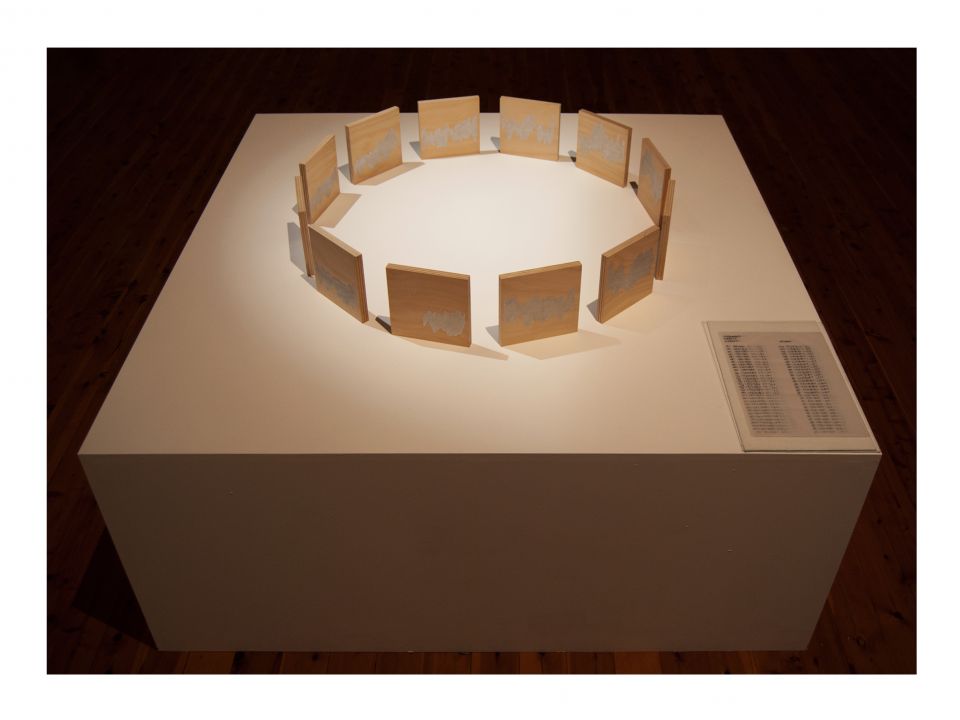
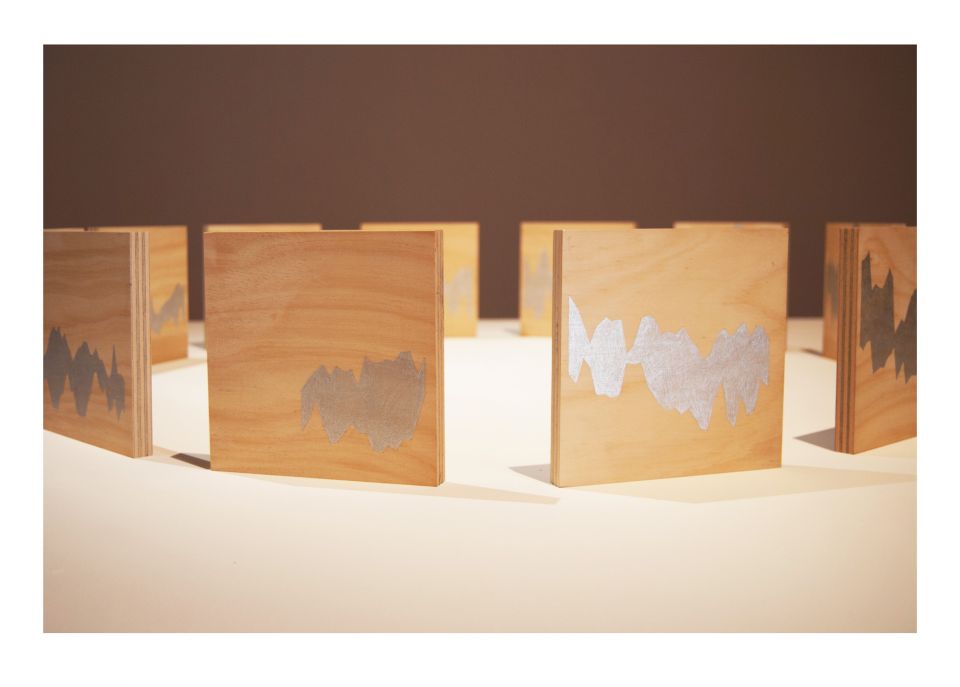
watertable
This work is an embroidery of the river system and the 2 major roads in the rural area of Wangaratta. Using a piece of offcut primed canvas, I washed the textile and created very subtle creases, then embroidered the drawing. The textile refers to original maps drawn on pieces of cloth by cartographers as they discovered new areas whilst walking in the landscape. Stretched onto a tabletop, the work hovers on a pair of white steel trestle legs.
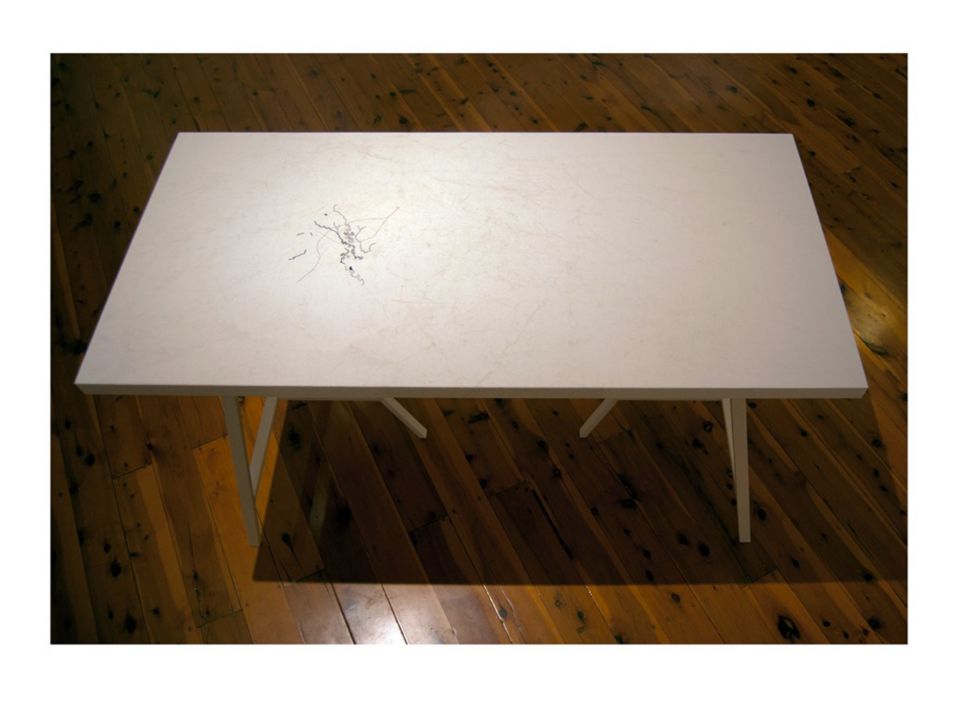
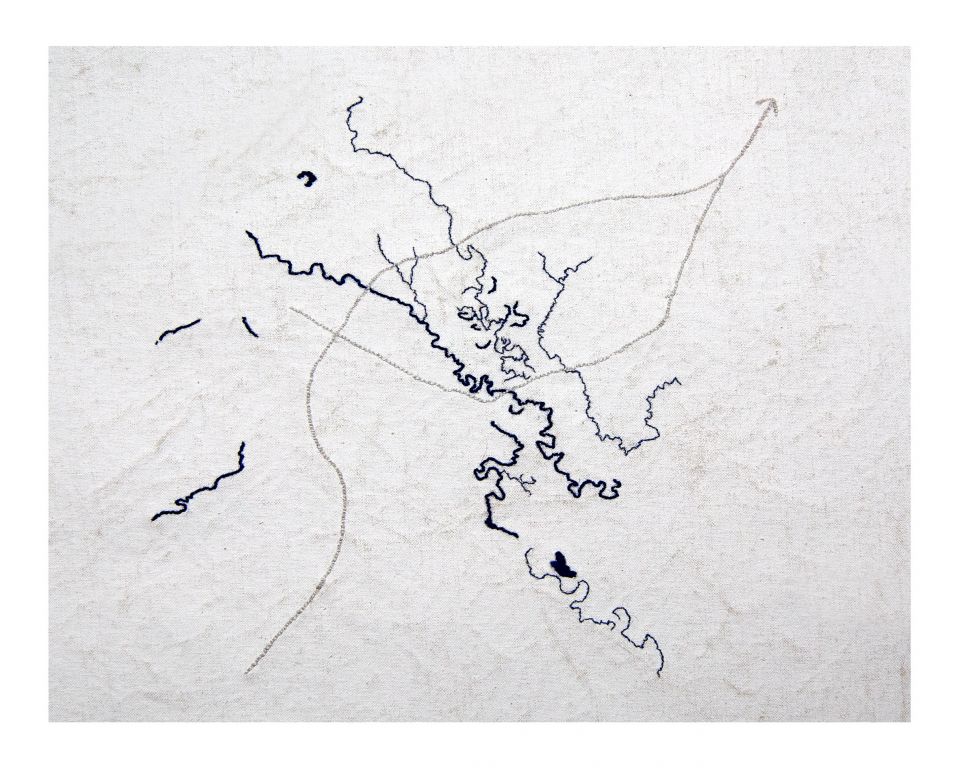
installation images
